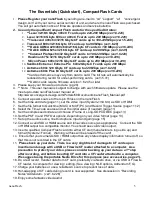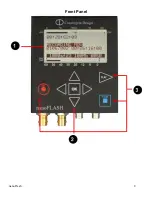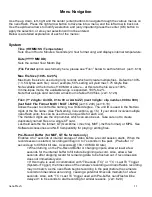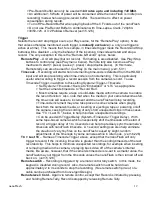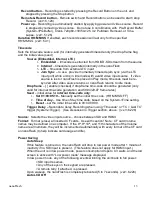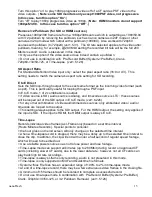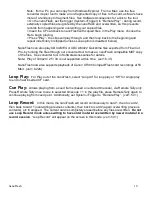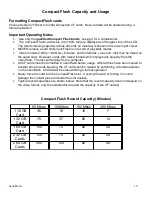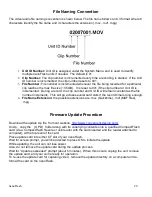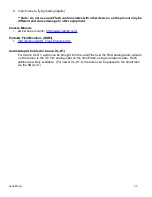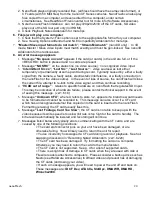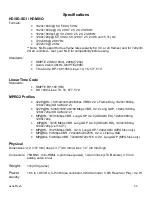
Menu Navigation
Use the up, down, left, right and the center (enter) buttons to navigate through the various menus on
the nanoFlash. Press the right arrow button to traverse into a menu, and the left arrow to back out.
Use the up/down arrows to modify a selection and (very important) press the center (OK) button to
apply the selection, or else your selection will not be entered.
Below is a detailed explanation of each of the menus:
System
Time (HH:MM:SS / Temperature)
Sets time in Hours: Minutes: Seconds (24 hour format only) and displays internal temperature.
Date (YYYY MM DD)
Sets the current Year Month Day
(
File Format
option was formerly here, please see “File=” below to set file format. (ver1.6.18)
Max File Size (100% to 20%)
Maximum file size to use during long records which will create multiple files. Default is 100%
(~ 3.5 Gbytes each file). As an example, 50% setting will yield max 1.75 Gbyte files.
Not available at the bit rate of 180 Mbit or above – at this rate the file size is 100%.
In time-lapse mode, the available range is expanded, 100% to 2%.
Note that a single card can hold a maximum of about 500 files. (ver1.5.126)
File= (1
st
2 digits: Unit ID, 01 to 99 or AA to ZZ) (next 3 digits: clip number, 000 to 999)
(last field: File Format .MOV / .MXF / .MPG)
(ver1.5.249) (ver1.6.18)
Allows the user to control file naming, to a limited degree. The unit ID is used in the first two
digits of the file name. (See File Naming Conventions, pg 16.) If your shoot involves multiple
nanoFlash units, this can be used to set unique IDs for each unit.
The middle 3 digits are the clip number, which can also be set. Take care not to create
duplicately named files on a single CF card.
Last field sets the file format: QT (Quicktime / .mov file), MXF (.mxf file format), or MPG. See
Software Accessories and NLE Compatibility for playing / editing files.
Pre-Record Buffer (for MXF, QT file formats only)
Enables 4 to 7 seconds of internal storage of video before a record session starts. When the
record session is started, recording will begin 4 to 7 seconds in the past. (Pre-buffer = 7
seconds up to 80 Mbit bit rate, 4 seconds @ 100, 140 Mbit bit rate)
> When turning on the Pre-Record Buffer or changing inputs, allow at least a few
seconds for the internal buffer to fill before beginning a record. Also, allow a few
seconds after stopping record for remaining data to be flushed out, if record session
does not immediately end.
> If this mode is used in combination with “Timecode (TC)” or “TC > Last TC” Trigger
(System->Trigger), the timecodes of the camera's recording and nanoFlash's recording
may not match, as the nanoFlash begins recording in the past (before the camera's
record-run timecode was running), causing a potential timecode mismatch of a few
seconds. Also, with “TC > Last TC” trigger used with Pre-buffer, nanoFlash will be
delayed 1 to 8 seconds to start recording for similar reasons. (ver1.6.29)
nanoFlash
11





